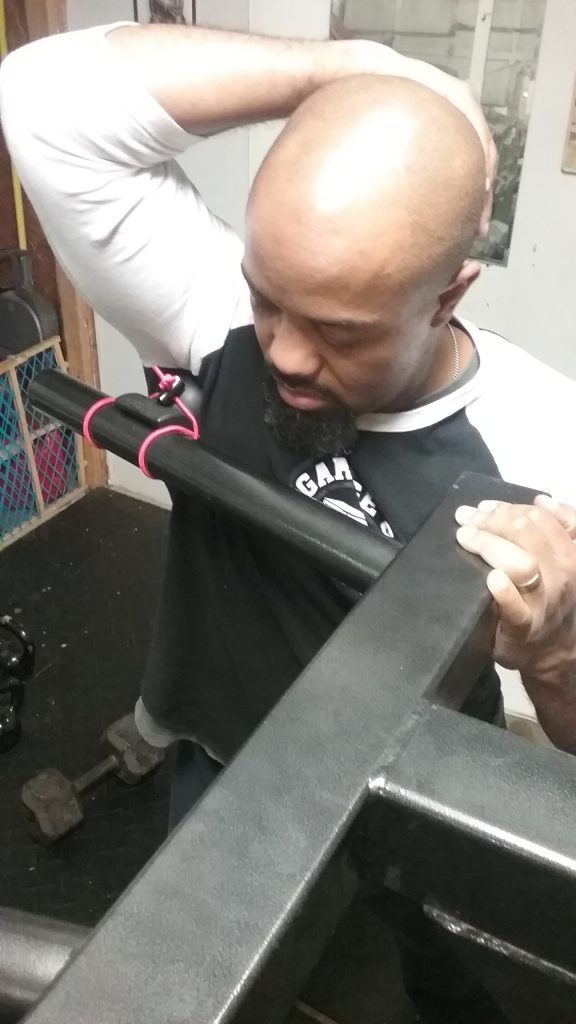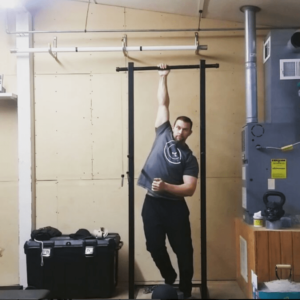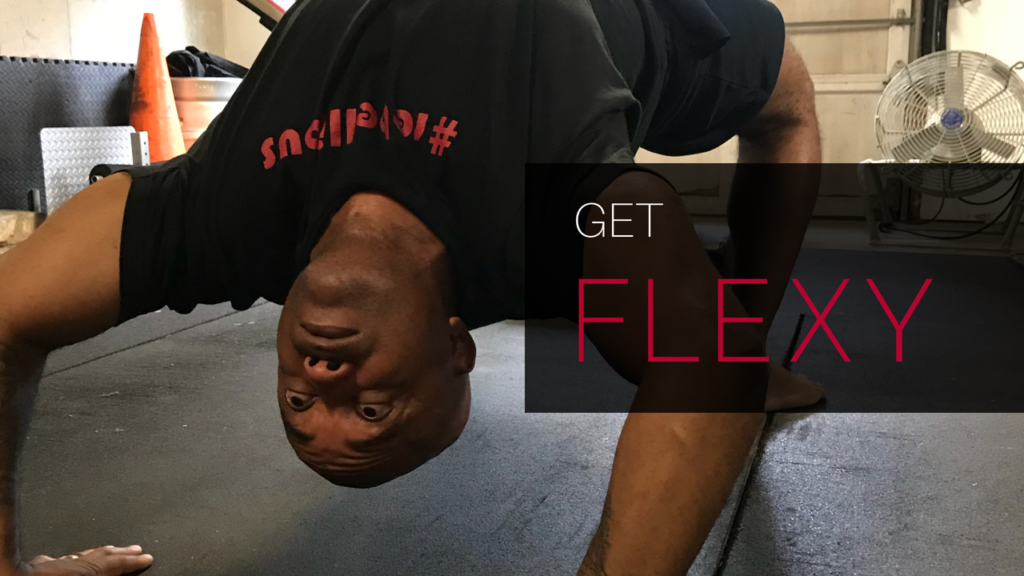4 Tips for More Effective Mobility Work
For your benefit, when you think of mobility work, I’d like you to think about maintaining or reclaiming your movement patterns. Examples could be your ability to perform squatting patterns or overhead press ranges of motion (specifically, how well you move and feel). At its best mobility work will help you stay injury free and unlock your best athletic and strength potential.
At its worst it can be a waste of time consuming your workout time and robbing you of your strength/performance potential.
When I started strength training (25 years ago) the extent of our “mobility work” was a couple haphazard half-hearted stretches before lifting. If anyone commented on your “mobility” they were referring to the depth of your squats.
Now for better and for worse “mobility work” is all over social media. Because of this “mobility work” has blossomed from a helpful tip to another lackluster fitness buzzword.
To help you get the best bang out of your mobility work:
- Personalize your mobility routine to target your needs.
- Keep it short, 10 minutes or less (if possible)!
- Consider doing mobility work between sets or as homework.
- Listen to your body – Your stiffness can be a protective mechanism.
Personalize your mobility routine to target your needs.
Just because your favorite Instagram star does a certain mobility routine, doesn’t mean it will meet your body’s needs. Furthermore your mobility movement prep today may need different things than your movement prep tomorrow. Your body may “feel” different. Example(s): you sleep in an awkward position; or go on a long cramped plane flight; or you overdid a previous workout and need to limber up. Also, you may want to focus on different mobility work for different movements. Example: you will prep your body differently for deadlifts vs. bench press.
My goal would be for you to experiment with a few different mobility movements &/or styles. Have a short list and perform a couple as needed pre-workout to get your body ready. If you are prone to wonky joints or tight muscles, have a go-to or 2 to dial up, when needed. There are many options. If you need examples of Mobility Work check out my previous post, Smorgasbord of Mobility Work.
Again the goal is not to do them all-all the time – it’s to give you options to be able to personalize your plan. If you need help deciding which to do, you could always seek out a qualified professional to give you guidance.
Keep it short!
When your mobility work takes too long it encroaches on your strength time. If you mobilize without strengthen you will end up chasing your tail. Lakers Head S&C Coach, Tim DiFrancesco tweeted, “Want a quick way to become a fragile athlete? Spend too much time with mobility work and not enough time getting strong under the bar.”(1)
So what’s the magic time period for mobility work?
In their book Amped warm-up Joe Defranco and Jim Smith say the warm-up mobility prior to strength training shouldn’t be longer than 10-15minutes (2). At the KMS (Kabuki Movement System) Seminar, Chris Duffin & his team presented many mobility strategies. But Chris explained the goal isn’t to get really good at all the mobility stuff – it’s to do as little as possible of it and get to lifting. He recommends under 9 minutes (3). In reference to warm-up/mobility work, I have been lucky to hear Pavel Tsatsouline say a few times, “Do what you need, and no more”. In his most recent book, Simple & Sinister, in classic Pavel style he encourages us, “Do not be a sissy. Keep your warm-up short.” (4)
Remember, you want to prepare for action, not turn the mobility work into the workout before your workout. Always remain safe, still do your lighter weight set(s) before you jump into your “working sets.” But if you are having difficulty pruning your mobility work down to 10 minutes, perhaps you should reevaluate your training routine. If you need 15+ minutes to prepare to workout, how did you chose your workout programming? It could be your body’s way of telling you, you didn’t select the correct mobility work, or strength program for you. If there are still other things you want to incorporate, read #3.
Related Post: Strong and Bendy

Consider doing mobility work between sets or during downtime throughout the day.
Dr. Quinn Henoch of Juggernaut Training Systems says shorten mobility time & get to your strength training (5). If you are having trouble getting in all the mobility work you want in pre-workout – do some between sets. Dr. Quinn Henoch also highlights that the benefits of SMR are short term. Doing them between sets can keep you feeling good throughout your workout, and would benefit you more than a long drawn out rolling of your whole body (5).
In Original Strength we encourage the performing of “reset” drills between sets. An example would be, you could get down to the ground and practice “rocking” between sets of squats to reset your squatting posture, gently bring your knee through range of motion, and improve foot & ankle mobility for your deep squats while maintaining healthy curves in your back (6).
If you cannot fit something in pre-workout or conveniently between sets, you could do while watching television in your down time.
Another idea could be to have a “recovery day” that you can play around with all of the mobility drills you enjoy.
To be clear, the recommendation is to figure out what few things you could do to get ready for your strength training. If you notice adding in a movement between sets in lieu of playing on your phone, helps you out – great! If you just love how you feel after rolling all up in down on your foam roller… save it for your spare time.
Listen to your body – Your stiffness can be a protective mechanism.
If during your mobility work you are grimacing and holding your breath, you are doing it wrong. In his book Relax into Strength Pavel talks about creating tension in your face and fists will prevent your improvements with stretching/mobility work (7). At the Original Strength Seminar Tim Anderson talked about maybe your hamstrings aren’t tight because you need to stretch them. Maybe they are tight because your body doesn’t trust your ability to stabilize your spine and it is protecting your spine with tight hamstrings (6).
No matter what you try if your body tells you, “It don’t feel right.” Do not do it.

Most importantly – Why should you care?
Because at it’s best, mobility work will help you stay injury free and unlock your best athletic and strength potential.
Because at it’s worst it can be a waste of time consuming your workout time and robbing you of your strength/performance potential.
Mobility work can be great, but if you are noticing you are constantly having to spend a lot of time on a particular area often – discovering the root cause of your issue(s) will go much further in your progress.
References:
(3) Duffin, C. (2016, Feb. & march). Kabuki Movement System. Lecture presented at Kabuki Movement System in AZ, Tempe.
(4) Tsatsouline, P. (2013). Simple & Sinister. pp17. StrongFirst, Inc.
(5) Henoch, D. (2016, September 8). Mobility Myths with Dr. Quinn Henoch | Foam Rolling |.
(7) Tsatsouline, P. (2001). Relax into Stretch. pp26. Dragon Door.

